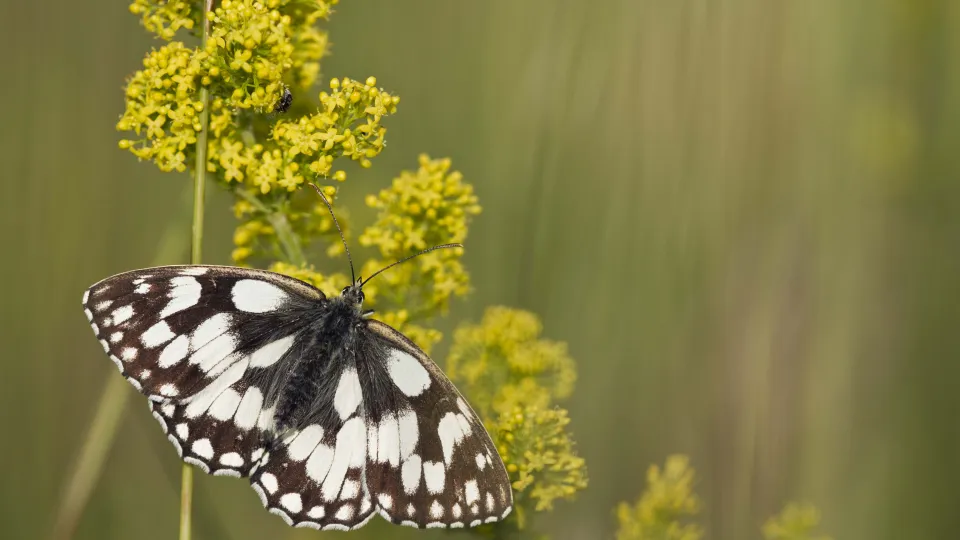
Marbled white
The striking black-and-white checks of the marbled white are unmistakeable. Watch out for it alighting on purple flowers, such as field scabious, on chalk and limestone grasslands and along woodland rides.

The striking black-and-white checks of the marbled white are unmistakeable. Watch out for it alighting on purple flowers, such as field scabious, on chalk and limestone grasslands and along woodland rides.
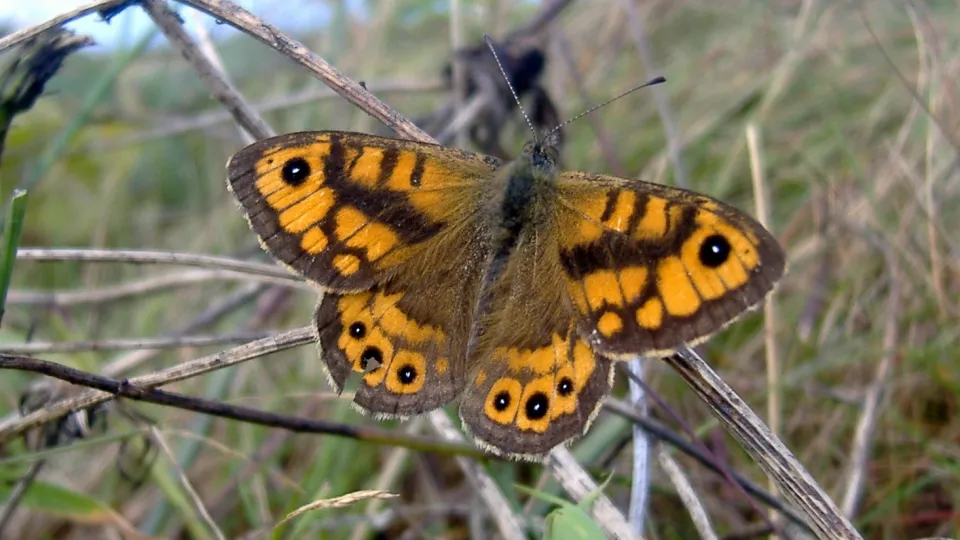
The wall brown or 'wall' gets its name from the fact it rests on any bare surface or wall! It can be found in open, sunny places like sand dunes, old quarries, grasslands and railway cuttings.
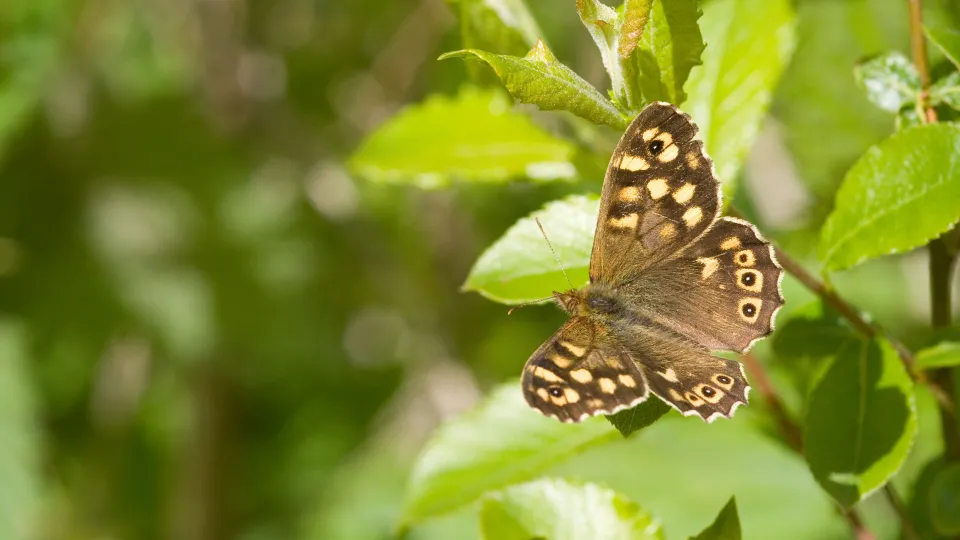
The speckled wood prefers the dappled sunlight of woodland rides and edges, hedgerows and even gardens. Despite declines, its range has spread over recent years.
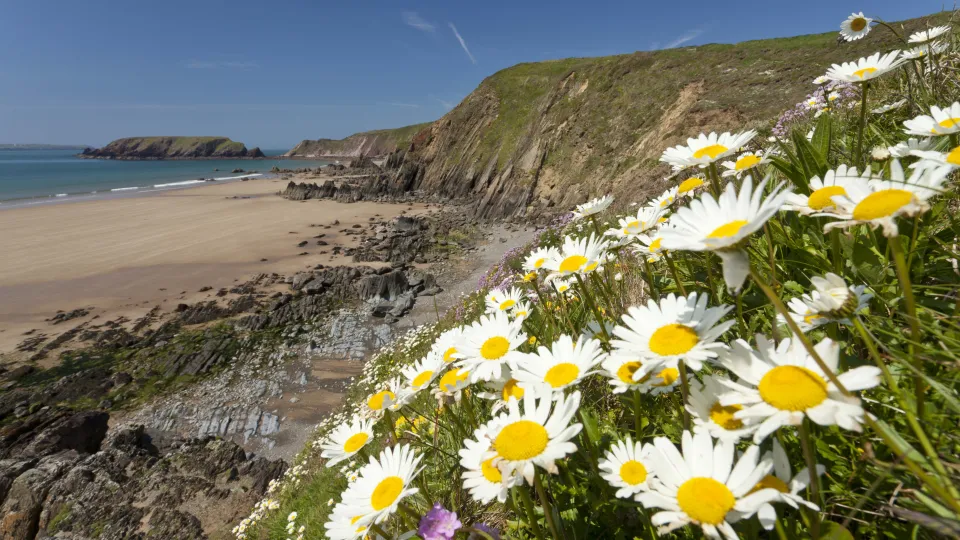
Often growing in swathes along a roadside or field margin, the oxeye daisy is just as at home in traditional hay meadows. The large, white, daisy-like flowers are easy to identify.
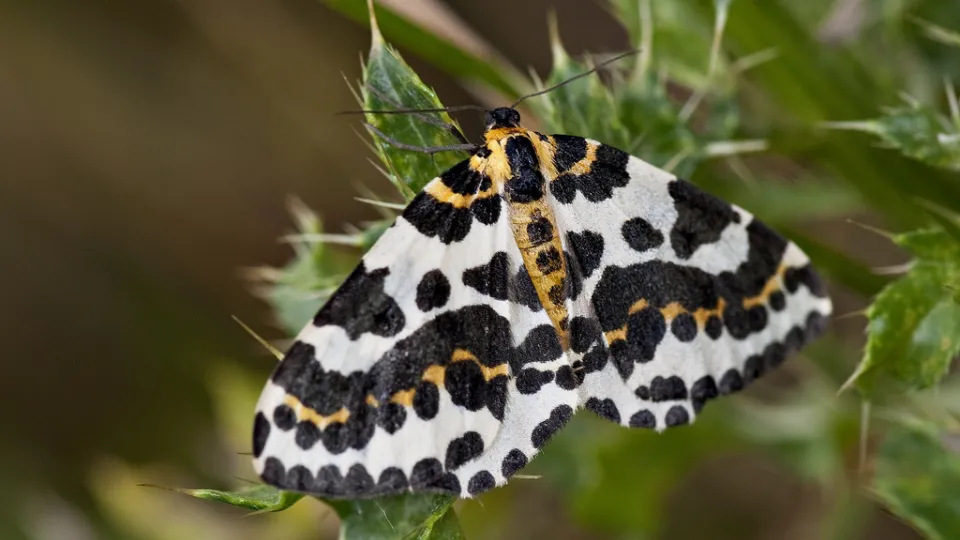
The magpie is a distinctive moth with striking black and yellow spots on white wings. It is a frequent garden visitor, but also likes woodland, scrub and heathland.
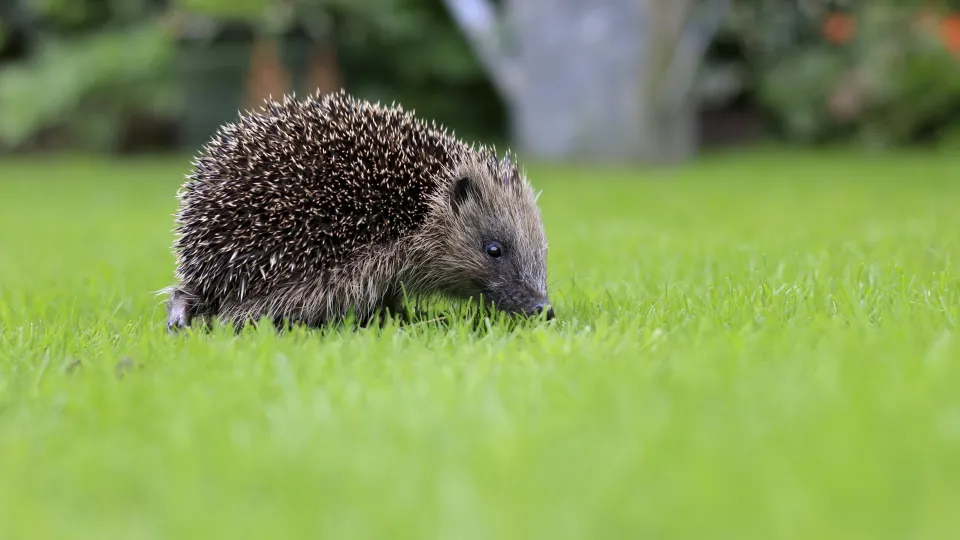
Considered a gardener’s best friend, hedgehogs will happily hoover up insects roaming in vegetable beds. Famously covered in spines, hedgehogs like to eat all sorts of bugs and crunchy beetles. They are most active at night and hibernate through winter.
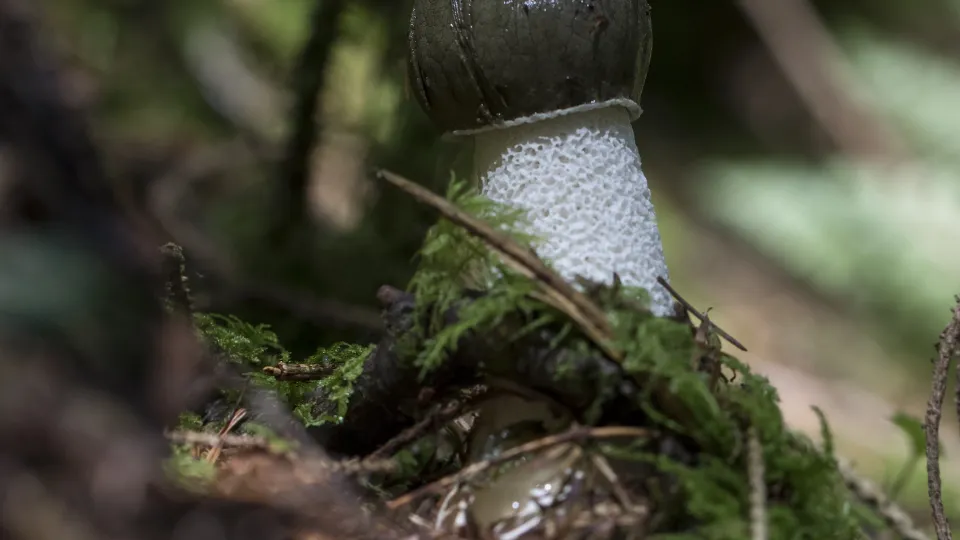
The stinkhorn has an unmistakeable and intense stench that has been likened to rotting meat. Its appearance is also very distinctive: a phallic, white, stem-like structure, with a brown, bell-shaped head.
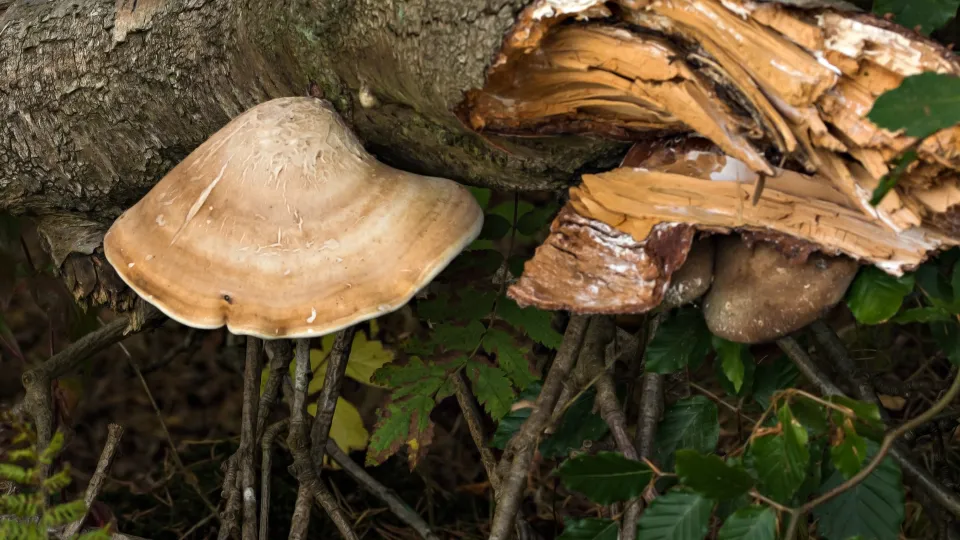
The birch polypore only grows on Birch trees. This leathery bracket fungus has a rounded, coffee-coloured cap that was once used for sharpening tools, hence its other name: the 'Razorstrop fungus'.
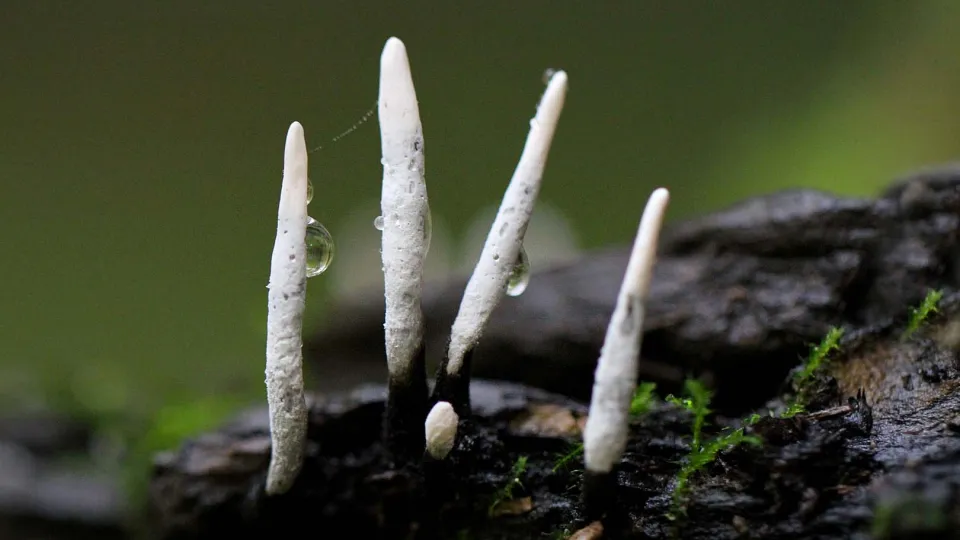
The candlesnuff fungus is very common. It has an erect, stick-like or forked fruiting body with a black base and white, powdery tip. It grows on dead and rotting wood.
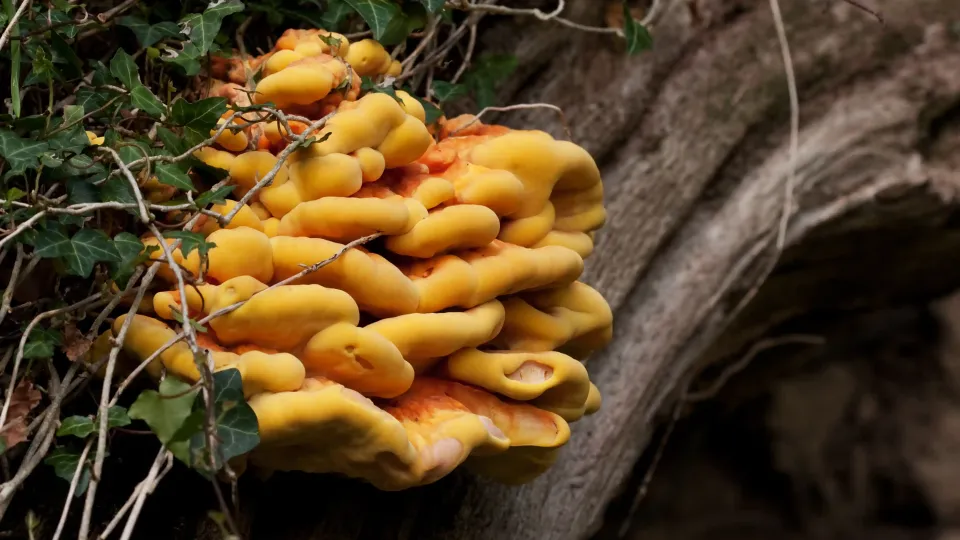
Chicken of the woods is a sulphur-yellow bracket fungus of trees in woods, parks and gardens. It can often be found in tiered clusters on oak, but also likes beech, chestnut, cherry and even yew.